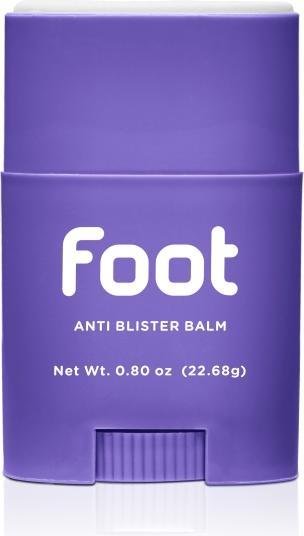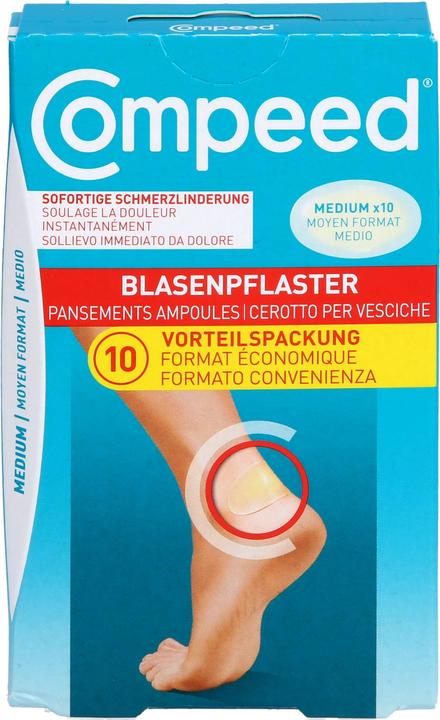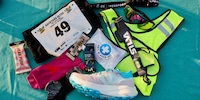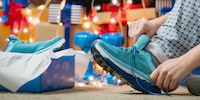

How to protect your feet from painful blisters when jogging
Blisters are more than just an annoying nuisance. They can take the fun out of running and, in the worst case, lead to infections. Find out how to protect yourself here.
The temperatures are rising and the outdoor running season has started again. But when you lace up your running shoes again after the winter break or treat yourself to a new pair, you may be familiar with the burning and pain in your feet.
When you take your shoes off after your run, you are greeted by ugly, fluid-filled bumps. Or red spots where the blister has burst, the top layer of skin is missing and a wound has formed. It's not pretty. But painful. It's not uncommon for the chafed skin to take away a good deal of motivation and joy for the next run.
Perhaps you have accepted blisters as a necessary evil and see the thick calluses that form as proof of your training discipline and toughness. Fair enough. But with thick calluses, you create more potential pressure and friction points, under which - at least in my experience - more blisters form, with an increased risk of infection.
How blisters develop
Bubbles are caused by friction. This causes layers of skin that lie on top of each other to separate, creating a cavity filled with wound fluid. Moisture favours blisters, as softened skin is more susceptible. Sweaty socks also increase frictional resistance, which also leads to painful skin damage more quickly. To prevent this, it is best to prevent blisters from forming in the first place. But how?
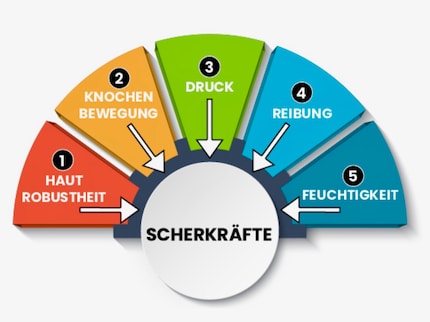
Source: Blasenberatung.de
Reduce friction with shoes and socks
It is important to wear well-fitting shoes that do not pinch, but are also not so big that the foot slides back and forth. Otherwise, the fewer seams and other protrusions you find in the shoe, the lower the risk of blisters. Running shoe manufacturers such as NNormal, for example, have integrated the tongue into the shoe in such a way that friction is minimised here too.
Socks play a crucial role in preventing blisters. If you hike a lot, you probably know the trick of wearing nylon socks underneath your socks. This means that the layers of fabric rub against each other instead of the layers of skin and you avoid painful blisters. The Wrightsocks, which are available for hiking, running and everyday wear, work on the same principle. They consist of two layers that are joined together in three places.
I wore the Wrightsocks on a city trip to Munich in my new Vans Old Skool and after two days with around 15,000 steps each, I had no pressure points or blisters. I wear the Wrightsock Coolmesh II for jogging and am delighted with how comfortable they feel. After a 23-kilometre run in damp terrain following an injury-related break of several weeks, I had no chafing.
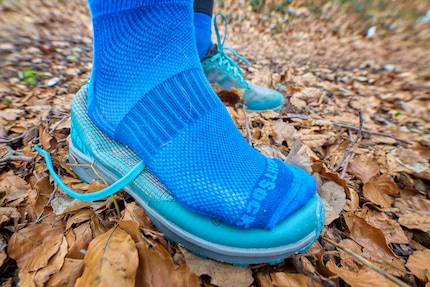
Source: Siri Schubert
However, my Icebug Phyto6 also fit perfectly, so I didn't have any blisters in them before the training break. With my next new running shoes, the double socks can then prove their worth in preventing annoying swelling.

With lubricant against chafing and chafing
Triathletes, swimmers and marathon runners may be familiar with Body Glide sports lubricant. Body Glide consists of oils and prevents your wetsuit, hydration pack or running shirt from rubbing against your body and causing painful chafing. I have been using it for years to prevent chafing in sensitive areas.
Bodyglide has developed a special product for blisters on the feet. In addition to the lubricants, it also contains comfrey extract, which is said to have an anti-inflammatory effect. Here too, the principle is to prevent friction on the skin. I apply Bodyglide Foot as a preventative measure, especially on longer runs and in the heat when my feet are sweating. In case you're wondering, the product shown in the Header image is a small sample pack that I take with me on runs. The product in our shop is twice the size.
Alternatively, you can also use this product. But what I like about Bodyglide is that I can apply it without having the oily product on my fingers afterwards.
Bubble stoppers for problem areas
To get more tips on how runners can prevent blisters, I ask Günter Klein from Blasenberatung.de. In addition to the other tips, he recommends an adhesive called a blister stopper. It is not applied to the feet, but is stuck into the shoes at critical points such as the heels or the lateral transition from the insole to the shoe.
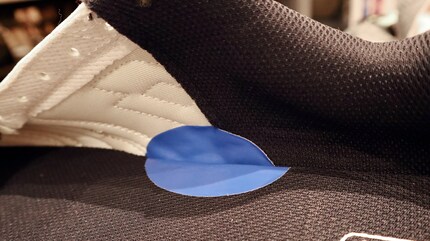
Source: Siri Schubert
This spot is so notorious for rubbing that I almost always remove the
insole and run without it. With the blister stopper, this is probably no longer necessary.
If you do end up with a blister
If the blister is not too large and intact, you should not puncture it as it acts as a protective cushion. If it is very large and painful or if pus forms, it should be opened, disinfected and bandaged under sterile conditions. It is then usually necessary to take a break from training until the wound caused by the blister has healed.
To protect a blister from aggravation due to additional friction and bacteria, blister plasters are useful. Compeed plasters are an integral part of my running injury kit, which I take with me on longer runs.
With the various strategies, your feet are well protected against blisters. So the running season can begin with new shoes and long spring runs.
Research diver, outdoor guide and SUP instructor – I love being in, on and around water. Lakes, rivers and the ocean are my playgrounds. For a change of perspective, I look at the world from above while trail running or flying drones.
Practical solutions for everyday problems with technology, household hacks and much more.
Show all